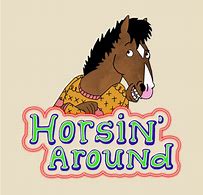Podcast: Play in new window | Download
Subscribe: RSS
The old saying goes, “Fool me once, shame on you. Fool me twice, shame on me!”
After 21 horses have perished at the Santa Anita horse racing track in southern California in a little more than two months this year, the facility finally capitulated and has cancelled horse racing indefinitely while investigators can try to determine the cause of the problems at the track.
Ya’ think?
I read about this story a few weeks ago when the tragedy had “only” reached about 20 horses injured badly enough that they had to be euthanized due to broken bones and other issues while racing on both the dirt and turf courses at this track.
Where was PETA, you ask? Below is their statement today about the track’s issues:
“On Saturday, after the 20th horse died at Santa Anita racetrack, PETA called on Governor Newsom to close the track. Today, following the death of yet another horse, Santa Anita has stated that it is closing until further notice. This was the right thing to do. The track should remain closed until the California Horse Racing Board dumps the drugs entirely, or injured horses whose soreness is masked by legally allowed medication will continue to sustain shattered bones. PETA renews its call for a criminal investigation into the trainers and veterinarians who may have put injured horses on the track, leading to their deaths.”
Maybe these guys ought to, quite literally, stick their heads outside for awhile in Southern California as the track has been subject to heavier than seasonal rains over the past two months with nearly one foot of rain falling on the Santa Anita racetrack.
I grew-up near Louisiana Downs in the Shreveport-Bossier City, Louisiana area. When the track first opened in the pre-casinos days of the 1970’s, the new track brought bettors from Texas, Oklahoma, and Arkansas as the “Sport of Kings” grabbed a foothold in the region.
Watching live horse racing seemed a lot like going to an afternoon baseball game. You would take some time to study your possible picks, walk around to watch the horses slowly come onto the track, maybe make a “Wile E. Coyote” wager, and then cheer during the running of the race itself.
Hopefully, you would win a few times to keep your dignity intact by the end of the session and want to return again soon.
However, I winced in observing the horse racing track becoming sloppy with rain. Most tracks will run the scheduled races in the rain unless there is severe weather (lightning, hail, etc.) in the area.
The tracks have spent a lot of money attempting to provide a relatively safe footing for the races.
Still, though, it always seemed dangerous to me.
These powerful and beautiful 1,000 pound animals would still run hard even in the rain and muddy conditions, but you had to wonder how dangerous it was for the horses and, to a lesser extent, the jockeys, too.
Common sense would tell me that the issues at the California race track are most likely traceable to the recent heavy rains. However, PETA’s concerns about drugs being used in the sport to mask injuries raise another eyebrow of suspicion.
According to one source, the cost of the horse itself can run up to $60,000 with annual costs to maintain, train, and pay entry fees for your race horse at nearly $60,000 annually.
The sport of kings, indeed! Rich ones!
Though most casual fans know about horse racing’s Triple Crown (Kentucky Derby, Preakness, and Belmont), I was a bit surprised to find that there are still at least 59 horse racing tracks still in seasonal operation around the country today. The purses offered are generally lower than years gone by, and average daily attendance and wagering has continued to slip over the past twenty years, too.
Facing more and more competition from the casino gaming industry, many horse racing facilities have reluctantly embraced adding slot machines and other casino-like bells and whistles to keep patrons coming back to their location for more action.
Though horse racing fans tend to be more mature with time on their hands, the sport’s negative publicity at Santa Anita track certainly won’t help the sport grow younger male and female fans, either.
Let’s hope that the entire horse racing industry becomes more serious about the issues seen in California.
It just seems logical that everyone (the horses, riders, and owners) are better off when track management considers all of the potential dangers and consequences of attempting to hold races in less than ideal or safe track conditions.

